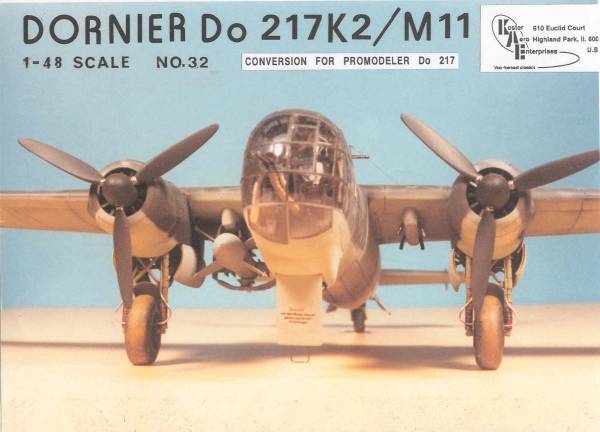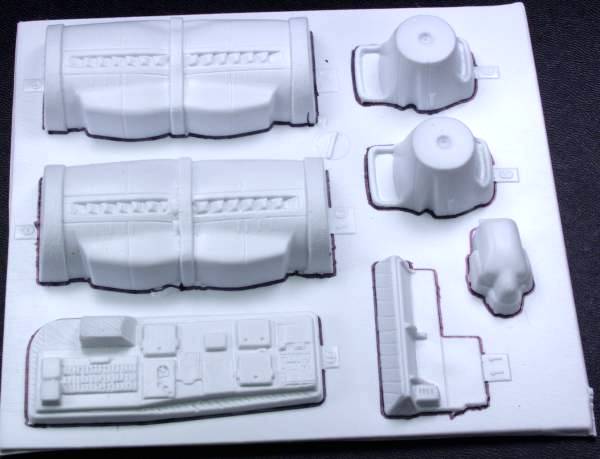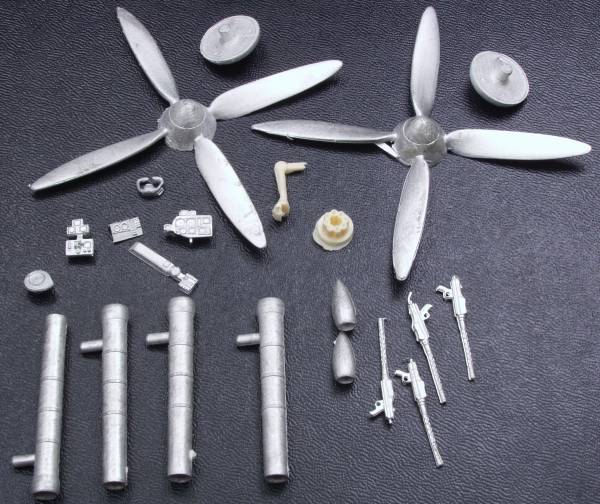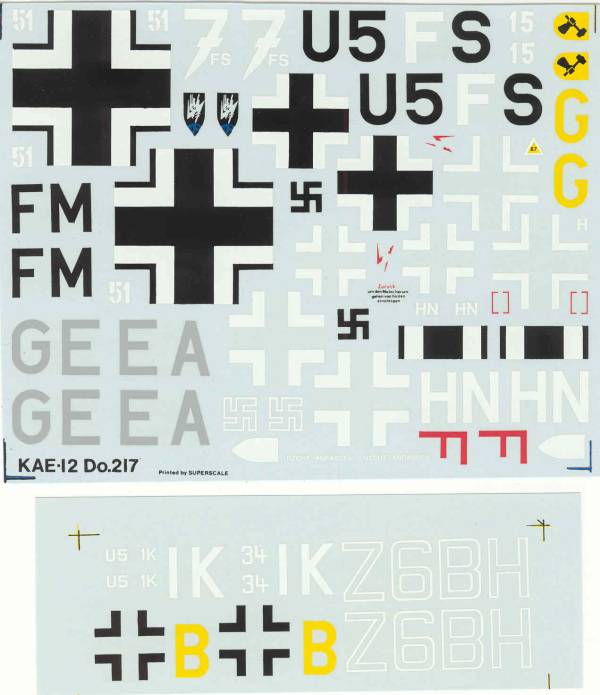

Do 217K-2

The Do 217K differed from the previous models in having a completely redesigned forward fuselage which eliminated the stepped windscreen and had glazed panels extending forward to the extreme nose.The K series was intended primarily for the night bombing role and the first production model, the K-1, began to leave the assembly line in the late Summer of 1942. In December of 1942 a version specifically intended to carry the Fritz X stand-off missile, the Do 217K-2, made its debut. The K-2 introduced extended wing outer panels increasing the span from 62' 4" to 81' 4 1/3". This gave the aircraft an improved operational ceiling which improved safety during the bomb run as well as providing the missile the necessary time to reach a velocity that would insure it penetrated the target. The carriers for the missiles were located between the engines and fuselage. While two could be carried only one could be controlled at a time which would have necessitated making two bomb runs over the target. As a result only one was carried on operations. The Do-217K-2's operated by III/KG 100 based at Marseilles-Istres first launched their Fritz X missiles in action over the Mediterranean on August 29, 1943. On September 9, 1943 the Italian battleship Roma was sunk while sailing to surrender to the allies by D0 217K-2's from III/KG 100.
The Kit

The base kit for this model will be the Promodeler Do 217E-5. To convert it to the K-2 version will require the Koster Aero Enterprises kit # 32. As of this writing this kit was still available.

The Koster Set comes in a 9 1/2" x 13" x 2" plain white box with a flap open top. Inside the box are three vacuformed sheets, a bag of cast metal parts, a fret of photoetch and two sheets of decals. The first vacuformed sheet contains the wing extensions, the parts for a Fritz X guided bomb, two wing racks, a piece that fits into the lower fuselage to mount a Fritz X there, and a couple interior parts. The parts are formed from a thick sheet compared to most vacuformed kits. The wings feature recessed panel lines. The detail is about as good as it gets for vacuformed parts. The panel lines are mostly consistent, one on my sheet was a little faint. See photo below.
The second sheet includes the liquid cooled engines for the M versions as well as an armored seat and interior sidewall. The comments above apply to this sheet as well. See photo below.

The bag of parts, most of which is cast metal includes propellors and backer plates for the M versions, exhaust dampers, air scoops, guns pilots instruments and control wheel. Also included are two cast resin parts, the control column and the flare pack for the Fritz X bomb. The metal parts are cleanly cast with only a bit of flash and parting line that needs removed. The resin parts are molded in a tan resin are nicely done as well. See photo below.

The photoetch fret includes all sorts of goodies, not all will be used as this fret is the same as the one provided in the 217N set which includes the radar antenna. The radiator screens will only be used on the liquid cooled engines. There are gun sights, rudder pedals, harness and belt hardware, throttle levers, exhaust shroud intake grills and other goodies. See photo below.
The clear parts are formed from a much heavier clear material than is normally used as they replace the entire forward fuselage and needs to be relatively sturdy. The parts are nice and clear with raised frame lines. See photo below.
The decals appear thin and are well registered and include swastikas. There appears to be markings for at least one each of an K and M versions and more but the instructions are not very helpful and one will need to do some research to see exactly what goes where. There are a few stencils. See photos below.

The instructions are printed on an 8 1/2" x 11" page printed on both sides. The instructions are brief and lot of information is packed in a rather small space so one needs to study them carefully before performing any of the steps. My only complaint with the instructions is the lack of good markings information.
This conversion kit is not for the faint of heart as it does require taking a razor saw to various donor kit parts. It also will help if you have had some experience working with vacuformed and resin parts and photoetch. The vacuformed parts are from a good heavy stock and will be much easier to work with than many vacuformed kits. The clear nose section makes the kit a bit more difficult than that of the N version which is reviewed here.
True Details offers a wheel set in resin (48109) but doesn't really improve on the those supplied with kit except you don't need to glue them together. The kit wheels are flattened to simulate the aircraft weight. True Details wheels appear to be the same width as the kit wheels which I read somewhere were a bit narrow in width. I will also be using a few bits and pieces from the Verlinden Detail set # 1659. Contents of this kit can be seen as part of the review here.
Links to kit build or reviews
A kit build / review using the
Koster kit can been seen here.
A build using the Koster kit can also be found here.
It is missing some photos but contains a lot of useful information no
the less.
References
Last updated 5/9/08